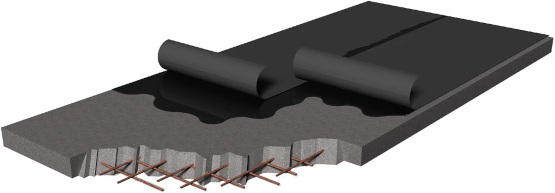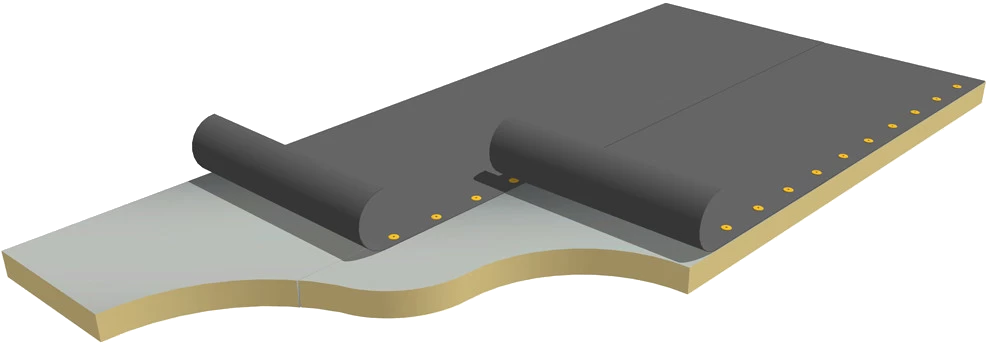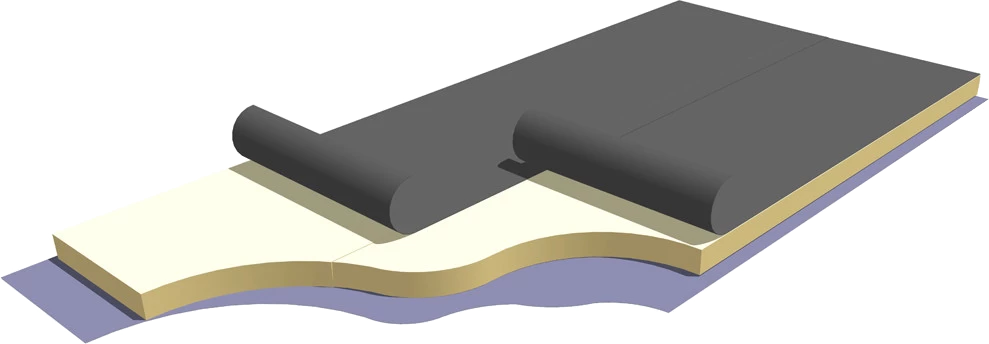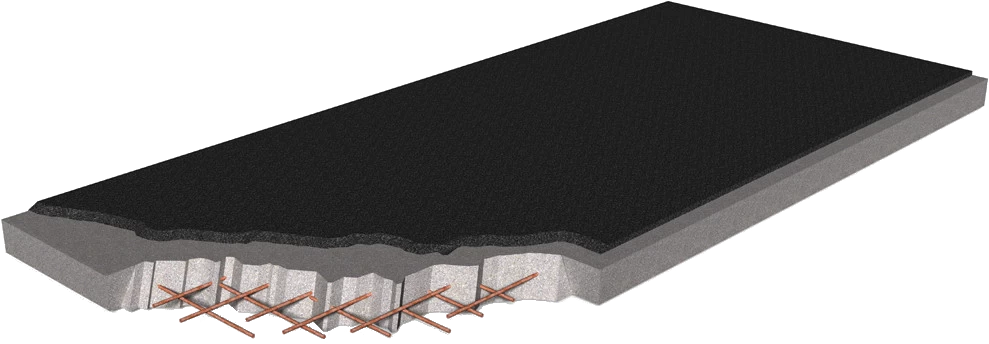Dry Roof Testing Method
Dry roof testing is a non-destructive method of detecting leaks or breaches in flat roof membranes, particularly on non-conductive roofing systems like single-ply membranes, asphalt, bitumen, and liquid-applied systems.
Use-Cases
- Quality assurance testing after roof installation.
- Periodic maintenance checks to ensure continued integrity.
- Pre-warranty inspections.
- Post-storm inspections.
- Detection of water ingress sources in leaking roofs.
Considerations
- Requires a dry membrane for accurate testing.
- Up to 25.6mm coating thickness.
- Cannot test through overburden (e.g., gravel ballast, insulation, green roofs). Must be removed prior to testing.
1|Non-Invasive
- Testing does not damage the membrane.
- No need to flood the roof or cut into it for inspection.
HOT-MELT ON CONCRETE DECKS

2|Highly Precise
- Detects even microscopic pinholes and breaches that are invisible to the eye.
- Immediate location pinpointing via audio/visual alerts.
MECHANICALLY FIXED SINGLE PLY MEMBRANES ON FOIL-FACED INSULATION

3|Dry Surface Operation
- Unlike wet testing (e.g., Electronic Leak Detection or EFVM), dry roof testing can be done without water and in dry conditions — ideal for many climates or building situations.
SINGLE-PLY ON TISSUE-FACED INSULATION

4|Efficient & Time-Saving
- Fast scanning of large areas.
- Reduces downtime or disruption compared to traditional testing.
ASPHALT ON CONCRETE DECKS

5|Ideal for New and Existing Roofs
- Can be used on newly installed membranes for quality assurance.
- Also suitable for routine maintenance inspections on existing roofs.
+ MANY OTHERS
Many build-ups, including timber decks can also be tested.
Send us your detail drawings and we'll confirm.
6|Lightweight and Portable
- Minimal setup time and easy access to work areas.
- Comes with adjustable voltage to suit various membrane thicknesses.
